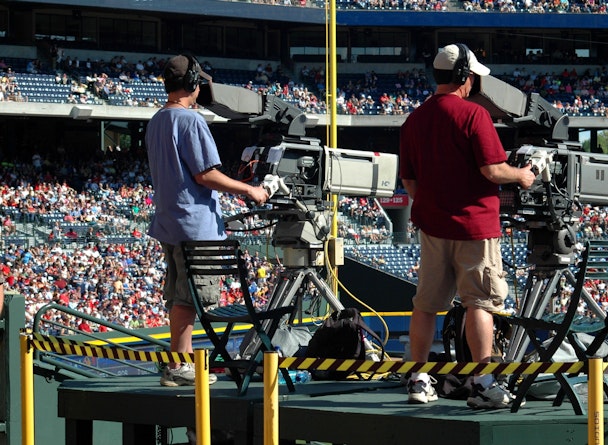‘No chance’ programmatic ads will work in livestreaming soon, experts say
Audiences are increasingly turning to connected TV (CTV) to watch live sports and entertainment, but with increased demand comes huge infrastructure pressures on programmatic ad serving. Experts paint a pessimistic outlook for a scaled solution anytime soon.

Can programmatic be scaled for live CTV? / Pexels
According to a report by Magnite, 68% of CTV viewers watch at least one livestreaming service, and sports livestreaming now accounts for 30% of all CTV streaming.
Streaming platforms are in the early stages of improving their technology and systems to cope with audience migration. Just last week Bloomberg reported that Apple was preparing to expand its advertising network for live TV as part of its deal to stream Major League Soccer next year. Disney+ ran its first successful livestream test in February for the 94th Oscar nominations.
Advertisement
Nicolle Pangis, chief executive officer of Ampersand TV, claims there is a “0% chance anytime soon” that live programmatic advertising will be achievable at scale. “Live programmatic in true TV is a long time away on any sort of scale. Can someone pull off a test? Of course, no question, someone will make a press release that they’ve pulled off a test,” she says.
Pangis is a veteran of programmatic advertising, but moved over to TV in 2018 when she joined Ampersand. She says the systems and mechanisms for trading programmatic are completely different in a TV context, resulting in the industry being a long way off. “Perhaps an individual streamer could do it for an individual show for an individual advertiser, for sure, but can you bring it to seven streaming providers for a $7m buy?” she asks.
Matt McLeggon is senior vice-president of advanced solutions at the sell-side ad platform Magnite. He agrees that there are a lot of infrastructure challenges with live CTV advertising, and admits Magnite can get “crushed by requests” when feeding the demand.
“Imagine 1 million people are watching the World Cup final on a streaming platform. There is very limited ad space, and there is just half-time. So at half-time 1 million users go to an ad break at the same time, so Magnite gets 1 million calls within a millisecond. Then let’s say there are 100 campaigns trafficking on the site, so we call 100 requests to DSPs and have to do an auction with potentially 100m responses,” McLeggon explains.
Advertisement
Magnite has rolled out the ‘Live Stream Acceleration’ product to help CTV publishers get more ad space within their live content. This spreads out requests, so when Magnite knows an ad break is coming it calls the DPSs in advance of the ad break so that the infrastructure and algorithms work better.
There is an urgency to cracking livestreaming. McLeggon says it’s the “crown jewel” for most media companies, so when mistakes happen the impact is bigger. “Imagine the chief executive officer of Disney is watching the game and they see an ad that isn’t supposed to be there, or two ads back-to-back. That is why you want those problems solved for live – it’s crucial.”
Alternatively, Sky’s director of digital advertising Graeme Hutcheson argues that since live content is typically premium and generally secures a 100% fill rate with premium rates, the demand for programmatic is low. However, he explains it is an area Sky is working with its adtech providers to solve.
Sky streams live sports online via Now with rights to the Premier League, NFL, rugby league, boxing and racing. Hutcheson explains: “The technology is there from a programmatic guaranteed perspective, but other forms of programmatic are held back slightly by the ability of technology to support BCAP code, Clearcast and brand clash.”
Sky’s current solution is to use a “combination of 3P technology to help us identify compliant ads and serve them with frame-by-frame accuracy into the livestream, at the right time, to the agreed audience,” he says.
Previously Integral Ad Science (IAS) chief executive officer Lisa Utzschneider told The Drum that marketers were “hungry” to move their marketing budgets over to live, but needed brand safety and transparency assurances. The IAS made its first foray into live verification in 2020 when it developed its multimedia classification tech. At the time Utzschneider said cracking live will be a “crawl, walk, run” process. “It will be incremental.”
To read more of The Drum’s Future of TV coverage, sign up for our newsletter and check out the Future of TV hub here.

